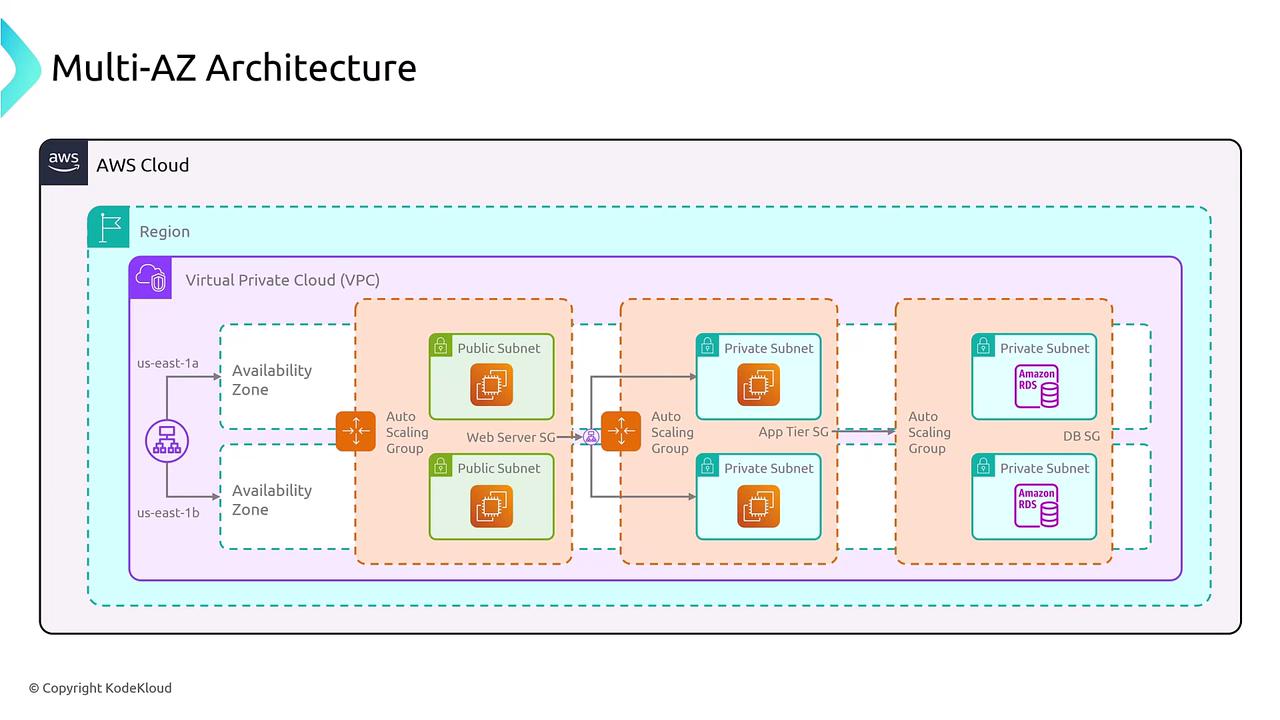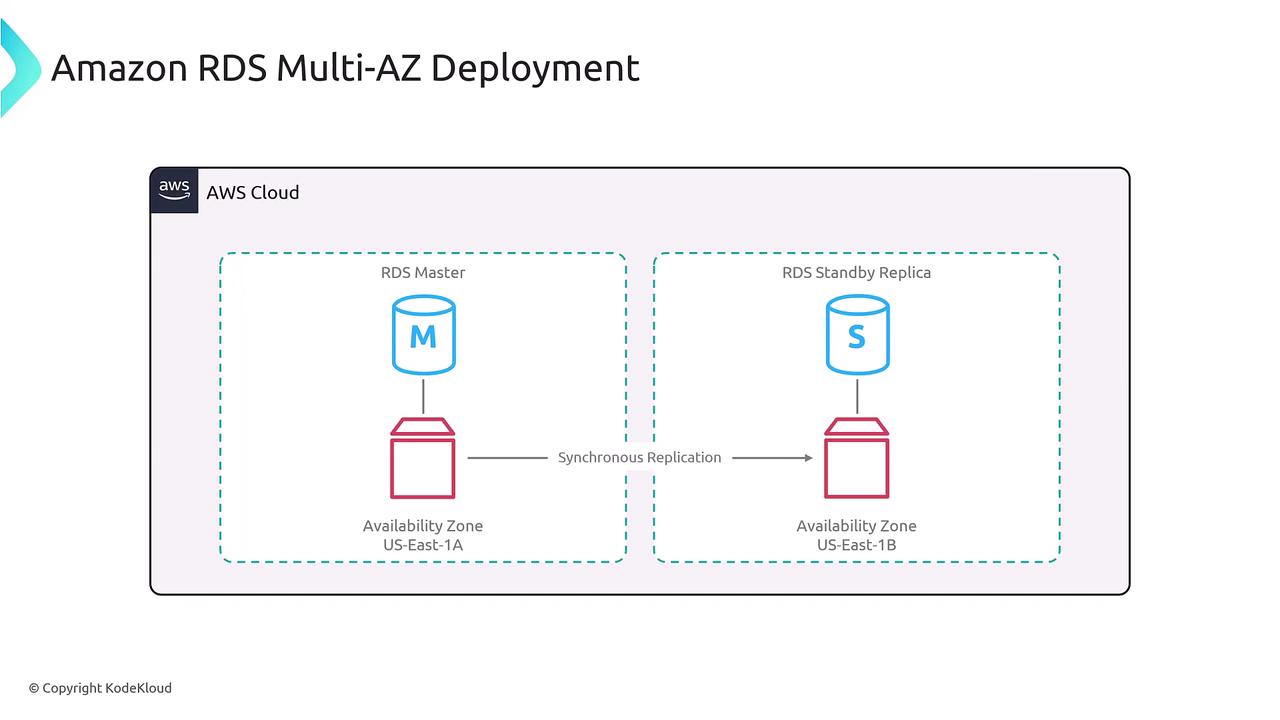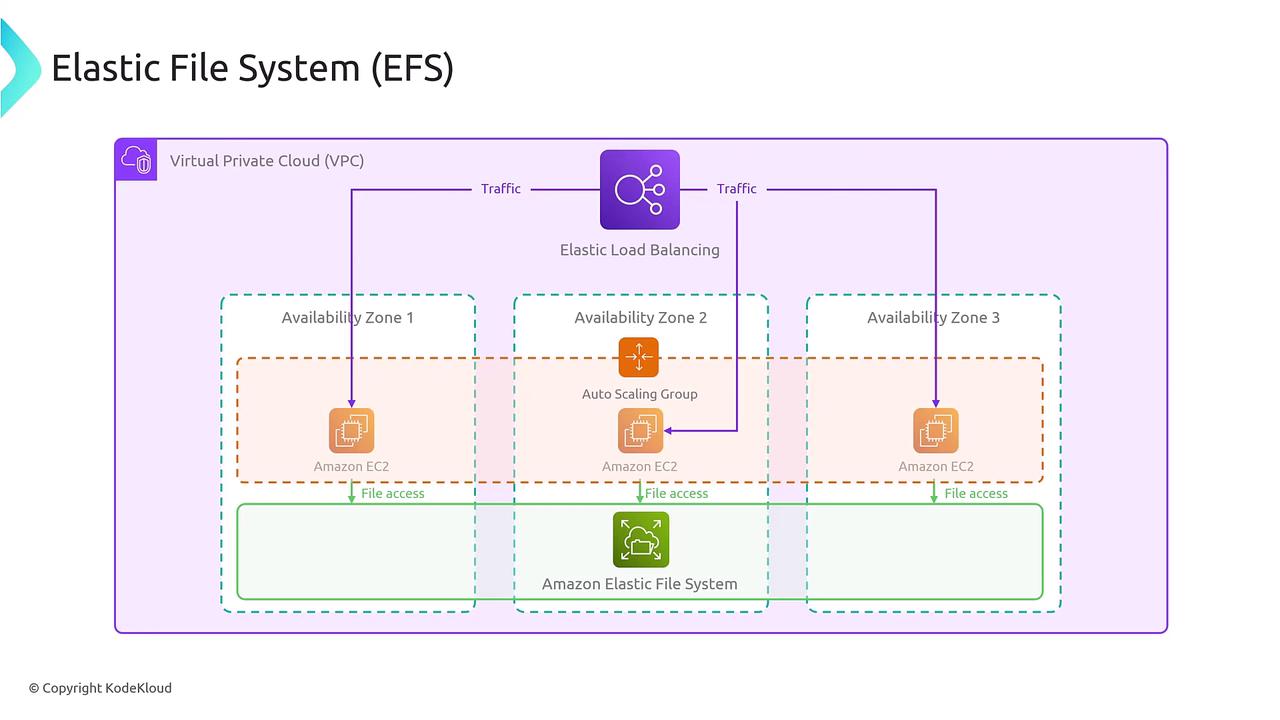AWS Certified SysOps Administrator - Associate
Domain 2 Reliability and BCP
Multi AZ Architectures for Various AWS Services Overview
Welcome to this lesson on multi-AZ architectures in AWS. In this article, we explore the evolution from single-AZ setups to multi-AZ architectures and discuss the built-in redundancy provided by many AWS services.
Understanding Managed AWS Service Redundancy
AWS managed services are generally configured to ensure high availability within a region. While this redundancy isn’t full disaster recovery, it offers a robust framework to keep your applications running even if a single component fails.
Single-AZ vs. Multi-AZ Architectures
The diagram below compares single-AZ and multi-AZ configurations. It details how components such as subnets, databases, auto scaling groups, Elastic Load Balancers, and security groups work together to enhance reliability and security.

This basic multi-AZ architecture facilitates data redundancy, automatic failover, and elevated availability. When combined with a global load balancer, it can also support disaster recovery by replicating the setup across multiple regions.
Amazon RDS: A Practical Multi-AZ Example
Amazon RDS is a prime example of multi-AZ deployment. By simply enabling the Multi-AZ option in the configuration, RDS creates a primary-secondary (active-passive) environment. In this setup, synchronous replication ensures that a write operation on the primary is simultaneously applied to the standby replica before confirmation is returned to the client.

Note
For scenarios where minimal replication lag is acceptable, asynchronous replication using read replicas is an alternative. This option is also available for other services like ElastiCache.
Application Load Balancers and Auto Scaling
Configuring an application load balancer to distribute traffic across three subnets attached to an auto scaling group enhances both high availability and scalability. This architecture efficiently manages varying loads—from a single instance to hundreds—depending on business requirements.
Inherently Redundant AWS Services
Services such as Amazon S3, DynamoDB, and Lambda are designed for high availability by operating across multiple data centers within a region.
![]()
Note
These services typically require no extra configuration for intra-region redundancy. However, if you need enhanced disaster recovery (DR), consider options like DynamoDB Global Tables, S3 cross-region replication, or replicating Lambda code and configuration to another region.
Elastic File System (EFS) in a Multi-AZ Configuration
Elastic File System (EFS) leverages the NFS protocol and, when paired with a load-balanced application, provides shared file storage that is automatically redundant across the entire region.

Key Takeaways
| Service/Configuration | Benefit | Recommendation |
|---|---|---|
| Amazon RDS | High availability via synchronous replication | Enable Multi-AZ to support automatic failover |
| Application Load Balancer with Auto Scaling | Dynamic scaling and multi-AZ high availability | Distribute traffic to ensure resilience |
| AWS Managed Services (S3, DynamoDB, Lambda) | Built-in regional redundancy | Consider additional DR configurations for cross-region requirements |
| Elastic File System (EFS) | Region-wide shared storage redundancy | Use with load balancers for optimal file accessibility |
Warning
Achieving true multi-region disaster recovery goes beyond simple Multi-AZ configurations. Ensure you implement additional measures like cross-region replication or global tables where necessary.
Conclusion
Many AWS services provide built-in or easily configurable redundancy with just a few clicks. Amazon RDS exemplifies how a multi-AZ setup can offer seamless failover, while services such as S3, DynamoDB, and Lambda are inherently robust within a region. For comprehensive disaster recovery and true multi-region redundancy, additional configurations are required.
Understanding these concepts will enable you to design resilient, highly available systems tailored to your business needs.
We'll see you in the next lesson.
Watch Video
Watch video content